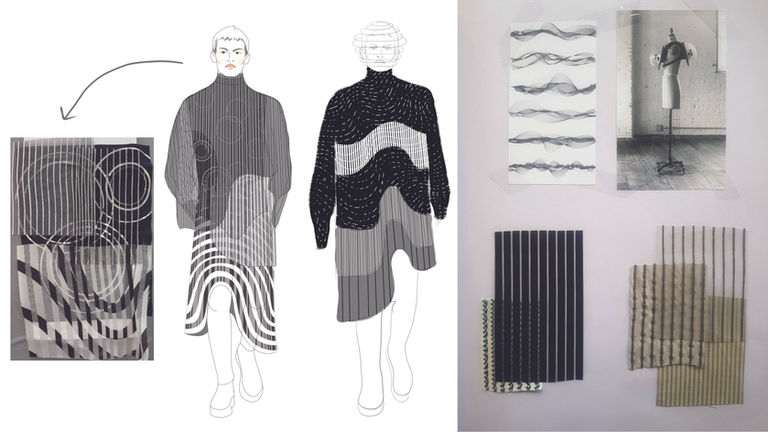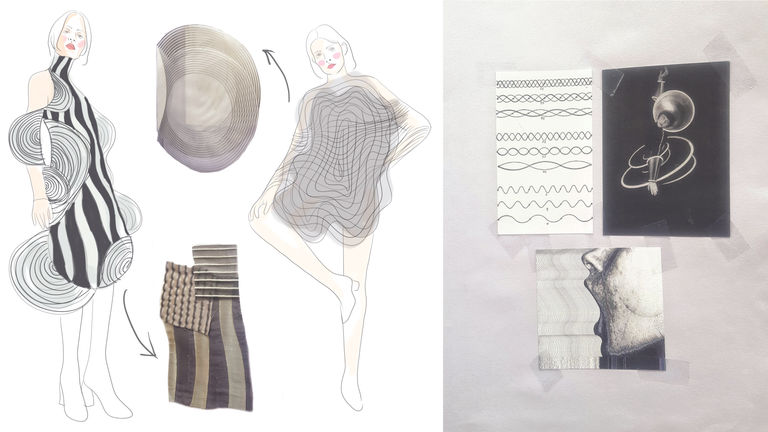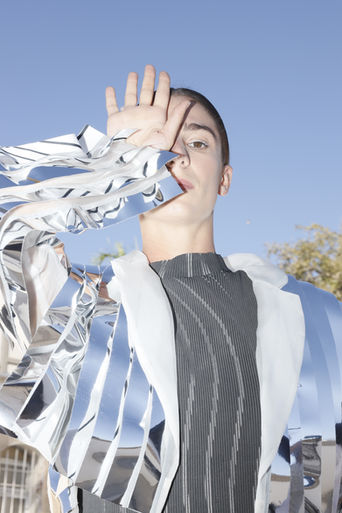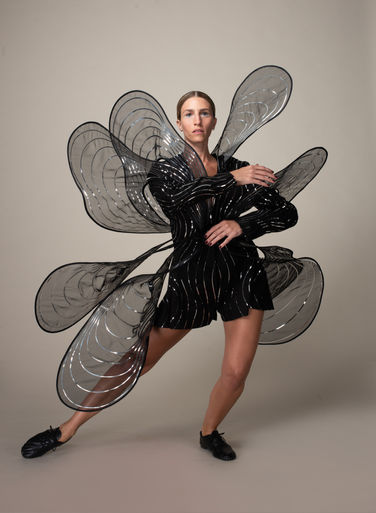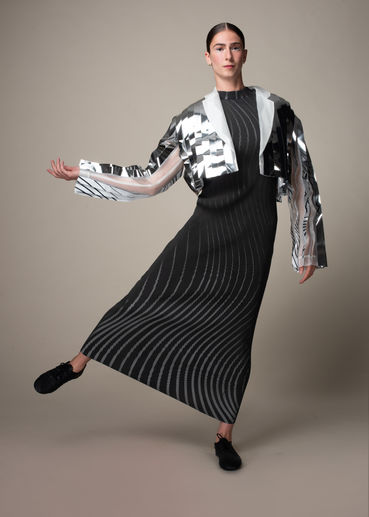
Reversible Destiny
My interdisciplinary graduation collection from Shenkar College's fashion design program (B.A.). I Created an interactive wearable by embedding technology that detects and translates the wearer's movement into sound. Every personal or joint action influences the spatial sound, challenging wearers to think and communicate collectively.
Multidisciplinary award for excellence from the Avraham Kadar Center for Design and Technology
INTRODUCTION
For my graduation collection, I focused on a matter that has preoccupied me in recent years - the direct impact of technology on personal communication and relationships between individuals. Despite the variety of new communication forms technology has introduced, studies indicate that people are experiencing more loneliness than ever before.
The objective of my project was to design clothes that foster a sense of belonging, inspire collaboration for a common purpose, and encourage individuals to step outside their comfort zones.
I wished to leverage technology in a manner that nurtures connections between people beyond the screen.
The project was presented at the Museum on the seam in Jerusalem at the Eretz Israel Museum in Tel Aviv and at the Tel Aviv museum during the Inspiration day exhibition,

INSPIRATION
Shusaku Arakawa and Madeleine Gins were conceptual artists and architects in 1960s New York. Their philosophy, known as reversible destiny and embraced by many, posited that humans should exist in a perpetual state of instability.
The couple contended that buildings could be designed to enhance physical and bodily stimulation, thereby prolonging life without a predetermined limit.
In my interpretation of their theory, settling into a comfort zone and leading a comfortable life equates to living as if we were already dead. Embracing a full life requires us to continually challenge ourselves to create, think, and act
"Why must a house have corners?"

"Who said a floor has to be flat?"

Today's clothes = a call for comfort
but I desire discomfort—to elicit a visceral response, to make people feel.
Interacting = sense of vitality
Bernard Leitner, born in 1938, was an Austrian artist. His works explore the impact of voice and sound on the human body. Leitner delves into the interplay between sound, space, and the body, treating sounds as a constructive material and architectural elements that shape space.
"Sounds travel at varying speeds in space, undulating, echoing, and connecting dynamic spatial entities."
According to the acoustic concept, hearing isn't limited to the ears; instead, the entire body is involved, and each part of the body may perceive sound differently.

Cylinder Space, 1974

Sound suit, 1975
SKETCHES
The visual aspects of the collection were inspired by sound waves - the materials dynamically shift in response to the wearer's movement and sound. While the project is highly conceptual, it encourages the integration of technology into fashion, not only to address practical needs but also to influence personal human relationships.
Sketchbook
THE PROCESS OF MAKING
Gyroscopes and RFID sensors are integrated into each clothing system, connecting to Arduino and transmitting data via Wi-Fi to the main computer. The information is then translated into various sounds using Ableton software.
Dancers' interactions directly influence the music; each movement shapes the audible sound.

PROCESS OF MAKING FABRIC
During the work on the collection I also created the fabrics from which they are made. My intention was to create fabrics that would synchronize with the movement of the dancers and breathe life into the garment.
The development stages of the fabric:
Starting with a white cotton twill fabric as the base. Creating a grid print of black stripes in a simple fabric color on top of it.
Adding another grid of straight vertical stripes using a material known as "inflatable pasta." This material inflates with heat. Expose the fabric to heat in a designated oven.
Consequently, the unpainted sections are revealed when the fabric is stretched.


COLLECTION
No.1 - Adi
No.2 - Tamar
No.3 - Noam
No.4 - Tal
No.5 - Tomer






